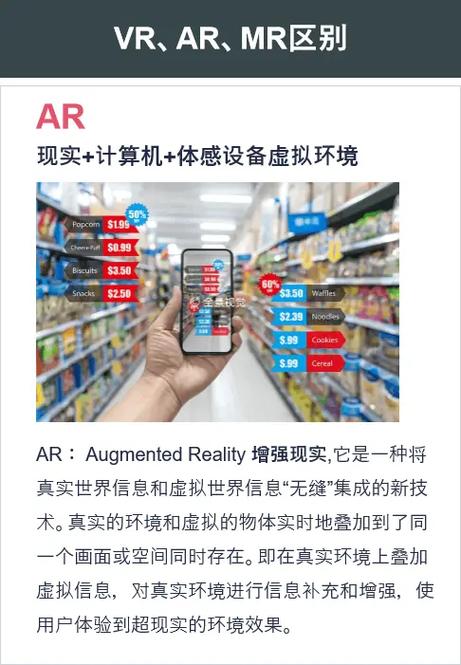
Understanding the Basics
Have you ever wondered what sets Augmented Reality (AR) apart from Virtual Reality (VR)? Both technologies offer immersive experiences, but they do so in very different ways. AR overlays digital information onto the real world, while VR creates a completely artificial environment that replaces the real world.
AR: Enhancing the Real World
AR is all about enhancing your perception of the real world. When you use AR, you’re seeing the real world through a device like a smartphone or tablet, but with digital information overlaid on top. This can be anything from a virtual menu in a restaurant to a digital guide in a museum. The key is that the digital information is integrated into the real world, allowing for a seamless experience.

VR: Immersing in a New World
VR, on the other hand, is about completely immersing you in a new world. When you put on a VR headset, you’re transported to a completely different environment. This could be a virtual game world, a historical reenactment, or even a space station. The goal of VR is to make you feel like you’re really there, even though you’re just sitting in your living room.
How They Work
AR and VR both rely on advanced technology to create their experiences. AR uses your device’s camera to capture the real world and overlay digital information on top of it. VR, on the other hand, uses a headset with screens that display a 3D environment. The headset also tracks your movements, allowing you to interact with the virtual world.
| Technology | AR | VR |
|---|---|---|
| Camera Usage | Yes | No |
| Headset Required | No | Yes |
| Environment Interaction | Yes | No |
Applications
AR and VR have a wide range of applications across various industries. AR is often used in retail, education, and entertainment. For example, you can use AR to try on virtual clothes before buying them, or to learn about a new topic in a more engaging way. VR, on the other hand, is popular in gaming, training, and therapy. It allows for immersive experiences that are impossible in the real world.
AR in Retail
In retail, AR can be used to create a more interactive shopping experience. For example, you can use AR to see how a piece of furniture would look in your home before purchasing it. This can help you make a more informed decision and increase your satisfaction with the purchase.

VR in Gaming
In gaming, VR takes the experience to a whole new level. You can feel like you’re really part of the game, whether you’re exploring a fantasy world or engaging in a high-stakes battle. VR gaming is becoming increasingly popular, and it’s changing the way we think about video games.
AR in Education
AR can also be used in education to make learning more engaging and interactive. For example, students can use AR to explore historical events or to learn about complex scientific concepts. This can help them better understand the material and retain it longer.
VR in Training
VR is also used in training, particularly for professions that require high levels of skill and precision. For example, surgeons can use VR to practice complex procedures in a safe and controlled environment. This can help improve their skills and reduce the risk of errors in real-life situations.
Conclusion
AR and VR are both powerful technologies that offer unique experiences. AR enhances the real world, while VR creates a completely new one. Whether you’re using AR to try on clothes or VR to explore a new game world, these technologies have the potential to change the way we interact with the world around us.







